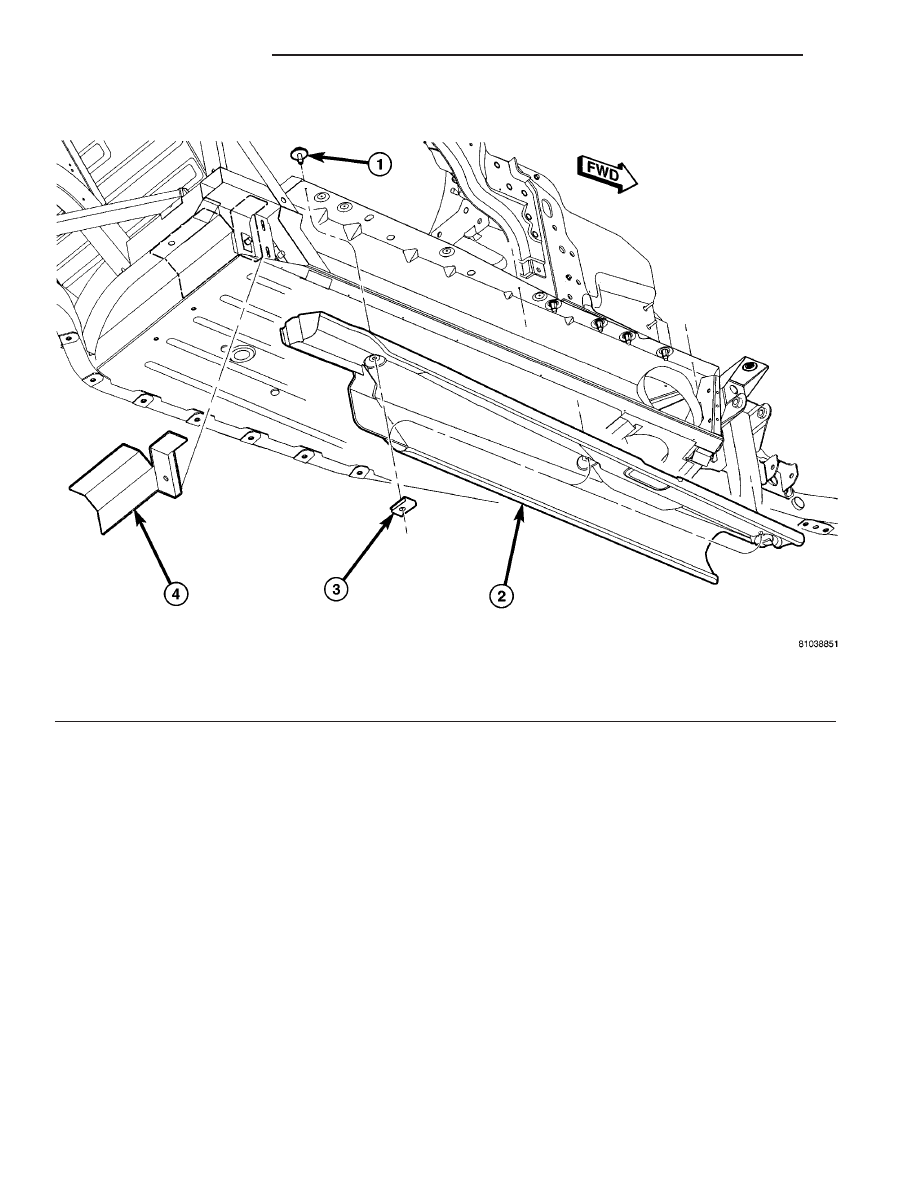Dodge Viper SRT-10 (ZB). Manual - part 184

(3) Apply penetrating oil to catalytic converter
V-Band clamp and resonator band clamp (Fig. 8) and
(Fig. 10).
(4) Disconnect downstream oxygen sensor connec-
tor (Fig. 8) and (Fig. 9).
(5) Loosen and remove V-Band clamp at exhaust
manifold flange (Fig. 8). Discard V-Band clamp.
NOTE: Do not reuse V-Band clamp.
(6) Remove “A” pillar support isolator (Fig. 8).
(7) Remove “B” pillar support isolator (Fig. 11).
(8) Loosen band clamp at resonator (Fig. 10).
(9) Remove catalytic converter from resonator.
NOTE: When replacement is required on any com-
ponent of the exhaust system, it is important that
original equipment parts be used for the following
reasons:
•
Ensure proper alignment with other parts in the
system
•
Provide acceptable exhaust noise levels
•
Does not change exhaust system back pres-
sure that could affect emissions and performance
Fig. 6 Inner Sill Heat Shield (Right Side Shown - Left Side Typical)
1 - SCREW(S)
2 - INNER SILL HEAT SHIELD
3 - U NUT
4 - PEEL AND STICK HEAT SHIELD
11 - 6
EXHAUST SYSTEM
ZB
CATALYTIC CONVERTER(S) (Continued)